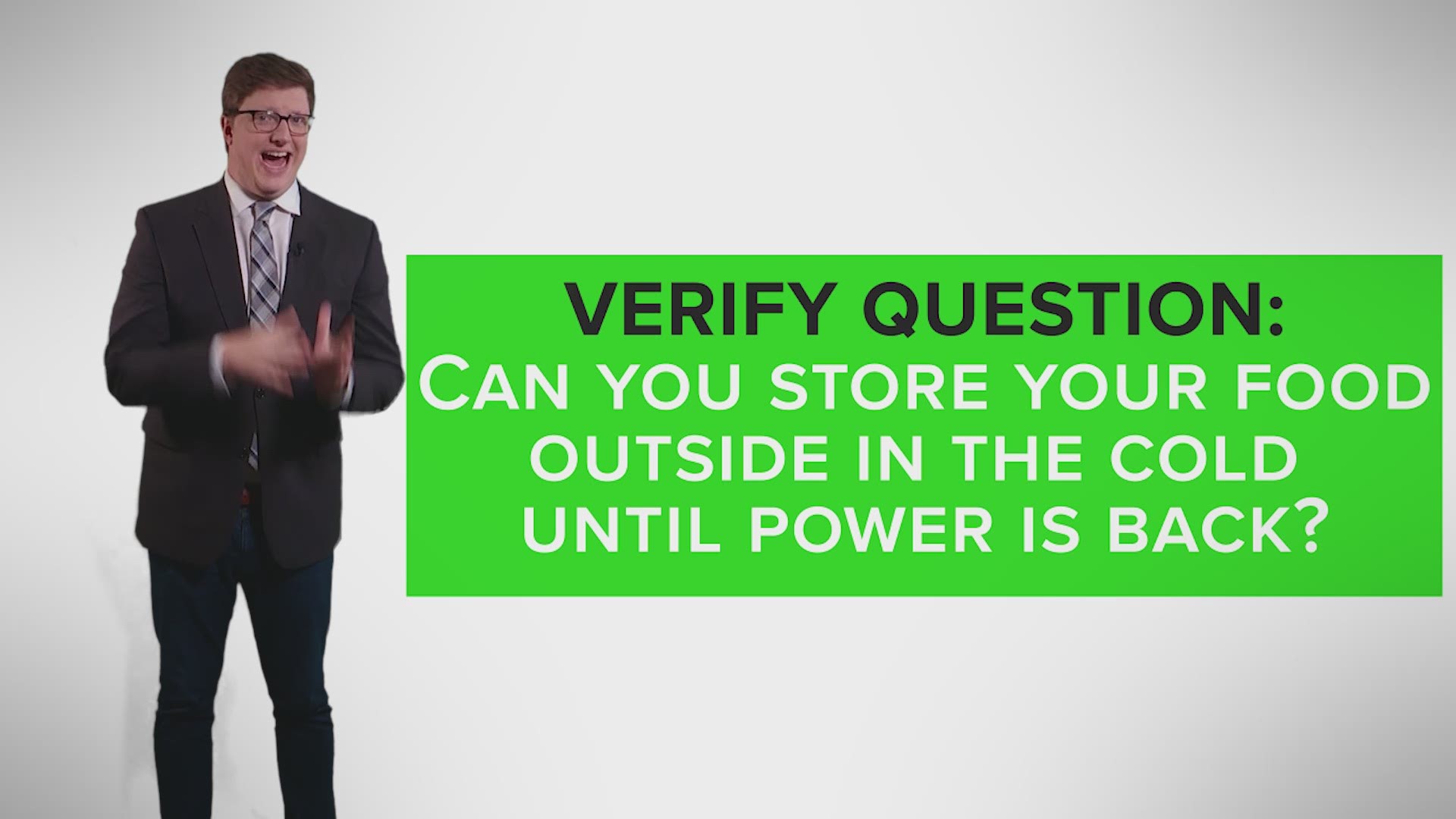Much of the country has been hit by a blast of freezing air and a winter storm moving across the nation at the same time. This includes large parts of the south, which rarely see icy and snowy weather. The winter storms have left many without power and with no experience on how to best deal with such power outages in the winter.
THE QUESTION
Can I safely keep my food outside if the power is out and the weather is freezing?
THE ANSWER
There are lots of risks involved with doing so and experts generally suggest against it, so it should only be used as a last possible resort and with routine temperature checks. And you have more options than you may initially think before relying on that last possible resort.
WHY WE ARE VERIFYING
Large parts of the population are suffering through power outages while dealing with freezing weather. Some have mentioned on social media they’re considering taking their food outside to keep it from going bad.
WHAT WE FOUND
First, you should know how much time your food has in the refrigerator and freezer before it goes bad. The U.S. government’s food safety website says a fridge will keep food cold for four hours if the door is kept closed and a full freezer will keep food cold for 48 hours and a half-full freezer will keep food cold 24 hours as long as the door is kept closed.
The food safety website says the danger zone for chilled food is between 40°F and 140°F. Even if frozen food has begun to thaw, it can be safely refrozen if it remains below 40°F or still has ice crystals on it.
However, the website actually suggests you avoid storing food outdoors. Variations in temperature, even variations caused by the passing of sunlight over something, risks bringing the food into the danger zone. There are also risks posed by unsanitary conditions and animals that may try to get into your food.
What it suggests instead is that you use your fridge and freezer like an old-fashioned icebox. You can accomplish that by literally taking chunks of ice — that part shouldn’t be too hard thanks to the frozen weather — and putting the ice in your freezer, fridge or even in coolers to help keep food chilled.
Using a cooler could theoretically make storing food outside safer, too. A North Dakota State University article on winter storm information tells readers that it’s not recommended you store your food outside in this scenario. However, you may be able to get away with storing the food in coolers in an unheated garage or other place where food won’t be disturbed as long as you routinely monitor the temperature and state of the food.
But you’re best off following the USDA’s advice and using your fridge and freezer like iceboxes. They say you should put your meat and poultry to one side of the freezer or on a tray to prevent thawing juices from contaminating other food items.
Once your power returns, you should inspect your food and determine if it’s safe to keep. If any perishable food has been above 40°F for two hours or more, you should toss it. You should also discard any food exposed to juices from thawing meat.
And remember, if in doubt, you should throw it out.
Something you’d like VERIFIED? Click here to submit your story.

